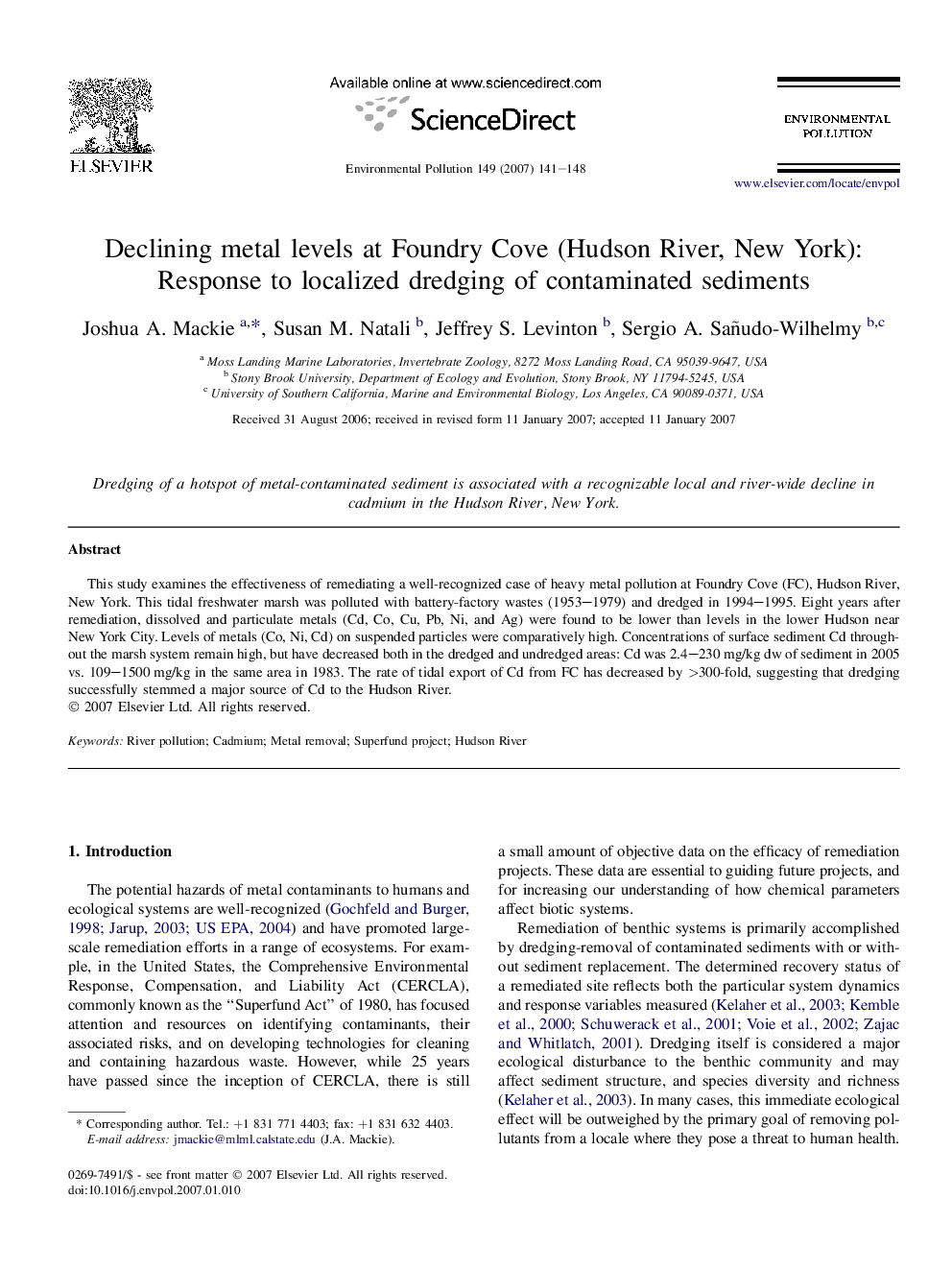| Article ID | Journal | Published Year | Pages | File Type |
|---|---|---|---|---|
| 4427450 | Environmental Pollution | 2007 | 8 Pages |
This study examines the effectiveness of remediating a well-recognized case of heavy metal pollution at Foundry Cove (FC), Hudson River, New York. This tidal freshwater marsh was polluted with battery-factory wastes (1953–1979) and dredged in 1994–1995. Eight years after remediation, dissolved and particulate metals (Cd, Co, Cu, Pb, Ni, and Ag) were found to be lower than levels in the lower Hudson near New York City. Levels of metals (Co, Ni, Cd) on suspended particles were comparatively high. Concentrations of surface sediment Cd throughout the marsh system remain high, but have decreased both in the dredged and undredged areas: Cd was 2.4–230 mg/kg dw of sediment in 2005 vs. 109–1500 mg/kg in the same area in 1983. The rate of tidal export of Cd from FC has decreased by >300-fold, suggesting that dredging successfully stemmed a major source of Cd to the Hudson River.
